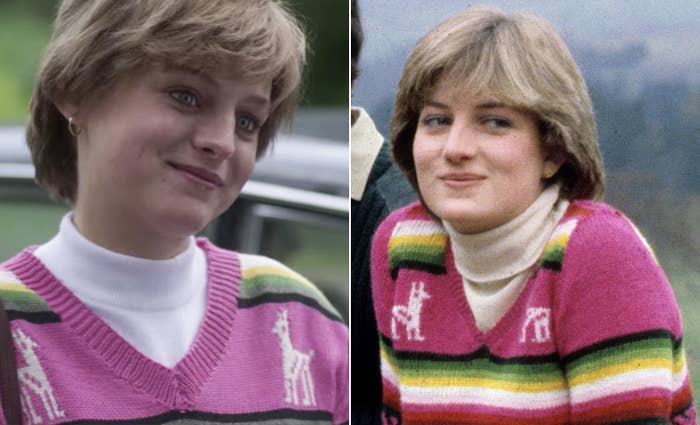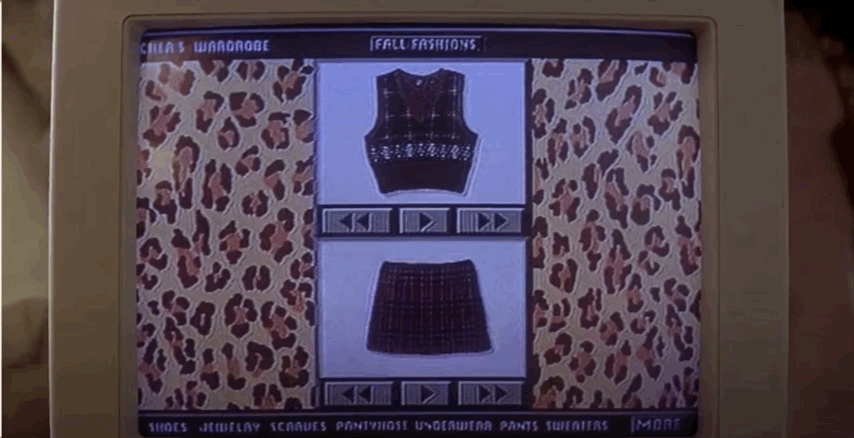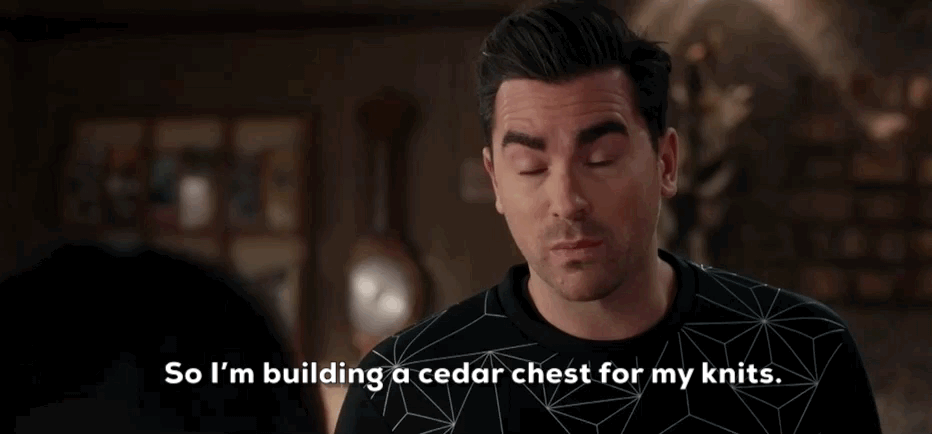She had never read Sartor Resartus, but she had a womanly instinct that clothes possess an influence more powerful over many than the worth of character or the magic of manners.
Louisa May Alcott, Little Women. 1868.
Clothes are emotional. When you put them on, they make you feel something, and they make other people feel something when they see you in them.
Joanna Coles, former editor-in-chief, Marie Claire magazine
The Origin
It hadn’t occurred to me to wonder what my last name “meant” until I read this passage in George R.R. Martin’s A Game of Thrones:
The benches were crowded, townsfolk and farmers mingling freely with all manner of travelers. The crossroads made for odd companions; dyers with black and purple hands shared a bench with rivermen reeking of fish, an ironsmith thick with muscle squeezed in beside a wizened old septon, hard-bitten sellswords and soft plump merchants swapped news like boon companions.
George R. R. Martin, A Game of Thrones. 1996.
This passage stuck out to me not because it invokes my actual last name (Rolater) but my mother’s maiden name: Dyer. My mother’s line, presumably, would trace back to people who dyed cloth for a living. (I remain clueless as to what a “rolater” would have done to make ends meet.) This was never something my family members have ever discussed explicitly, but the last time I saw my Grandmother Dyer alive, in 2015, she described making underwear out of the silk from my Grandfather Dyer’s World War II parachute.
Yet it was still several years after connecting my lineage to this profession before I became more interested in clothes by way of a few creative influences, which in turn started making me look at the world through the eyes of…clothes. One of those influences was HSPVA itself, or rather, an alum, Alan Gonzalez, who gave an interview to the school newspaper about his experience as a contestant on a show I had at that point never watched before: Project Runway.

Another influence was another PVA alum, writer Susan Choi, whose novel Trust Exercise won the 2019 National Book Award for Fiction and is rumored to be based on/inspired by her time at PVA, where she was a student in the Theater Department, working behind the scenes, in Wardrobe–as did a main character in the novel-within-this-novel, in which clothes were used as, among other things, a plot device when designer shirts become a means through which the Wardrobe student character exposes an illicit relationship between a teacher and another student.
But the idea for The Clothes Class officially breached my conscious mind through the intersection of two figures regarded (if to different degrees) as style icons from two TV shows, Schitt’s Creek and The Crown.
A Tale of Two Sweaters
If you want to destroy my sweater (whoa, oh, oh)
Weezer, “Undone (The Sweater Song),” s/t, 1994.
Hold this thread as I walk away (as I walk away)
Watch me unravel, I’ll soon be naked
Lying on the floor, lying on the floor
I’ve come undone
Sweater 1: Diana
The extent to which a piece of clothing can communicate a narrative was driven home to me by an article on a sweater of Princess Diana’s; its headline dubs it her “most notorious” while the url indicates this was changed from an initial designation of “most iconic”–the black sheep sweater.
The Crown shows this sweater only fleetingly, and in a cut-off frame that appears to have required changing the position of the lone black sheep to a higher row than on its original counterpart:
This sweater is shown so fleetingly you could easily miss it if you’re not looking for it. As the article about it discusses, a lot of its meaning is gained retrospectively as Diana’s status as “black sheep” in the royal family becomes increasingly apparent until it culminates into what was once unthinkable in the royal family–divorce. (The show further develops this iconography by rendering Diana’s wedding dress as sacrificial lamb imagery in the “Fairy Tale” episode.)
What I’ve internalized as Diana’s “kindergarten” sweaters are showcased on the show more prominently:

The show’s adding the sweater over this look makes her look even younger, and highlighting her innocence in this scene, her second significant interaction with Charles, seems a deliberate choice:

Diana’s also in costume as a fairy and very much still a literal child in the scene where she first meets Charles. When she marries him at barely 20 years old, she’s still a child essentially, if not legally. Fashion becomes a significant source of her power and influence, and there’s one storyline that basically shows this influence to single-handedly save the British empire when Australia is about to pull out.
The story of clothes is the story of empire and exploitation.
Sweater 2: David
As I was watching season 4 of The Crown, I was simultaneously watching the final season of Schitt’s Creek. In a concluding documentary, Best Wishes, Warmest Regards: A Schitt’s Creek Farewell, creator Dan Levy talks about how much they focused on developing the four main characters of the Rose family at the show’s outset, and how integral the wardrobe was in expressing the essence of these characters:
Wardrobe is probably the most important element in storytelling outside of actually writing because we as people say so much about who we are and what we believe in and what we want and what we think of ourselves by the way that we dress.
Daniel Levy on Best Wishes, Warmest Regards: A Schitt’s Creek Farewell. 2020.
It’s as though the clothing was thought about at the same time as the character development and everything else…so it’s become inherent to the show [Schitt’s Creek].
Virginia Smith, fashion director, Vogue magazine on Best Wishes, Warmest Regards: A Schitt’s Creek Farewell. 2020.
“I think the investment being put into wardrobe was a smart investment because that said so much about who the characters were.”
Rachel Giese, editorial director, XTRA on Best Wishes, Warmest Regards: A Schitt’s Creek Farewell. 2020.
All of the characters in this family of four have their own wardrobe-related quirks; they also somehow made away with their vast collection of designer clothes (if you count Moira’s wigs as part of her clothes/wardrobe) when they lost literally everything else. But I will focus on one, the son, David Rose.

David’s defining wardrobe item would be the sweater, usually in a black-and-white palette.
That David’s almost exclusively black-and-white color palette matches his mother Moira’s signifies a likeness between them.
“Like Beyoncé, I excel as a solo artist…
If you take in all of David’s outfits on the show compiled here in a quick-cut context, one in particular may or may not stick out, depending on your eye. There is some variation in David’s black-and-white palette, but the most significant/striking deviation is the Givenchy flame sweater. This sweater appears in episode 4.6, when, during an Open Mic Night to promote their store, David’s love interest and business partner Patrick serenades him with an acoustic rendition of Tina Turner’s “Simply the Best.”
Without mentioning the sweater David is wearing as it happens, the documentary unpacks the significance of this narrative moment:
It’s such a beautiful moment, because when you see gay relationships on screen and the way they’re portrayed it’s often portrayed through a lens of tragedy or strife or struggle, right, it’s like ‘look at all we had to overcome to love each other,’ you know, and so it felt like this moment where we got to see ourselves just being in love and being joyful, so I think that scene was a watershed moment in queer representation in television history.
Philip Picardi, journalist, former EIC Out magazine on Best Wishes, Warmest Regards: A Schitt’s Creek Farewell. 2020.
Further, per Rachel Geise, it’s a moment we’re “watching [David’s queer] archness break,” an archness familiar to queer people who have used it as a defense mechanism/armor for not fitting in. So, per me, it’s fitting that David’s wardrobe in this critical moment should help to highlight that it’s critical by breaking the pattern of his black-and-white palette.
David’s sweaters find such a narrative use again when, while still maintaining their black foundation, they become more colorful during the (Emmy-sweeping) final season as David plans his wedding to Patrick.
The flaming Givenchy sweater even appears to get a callback in the scene where David and Patrick get their dream house..

Of course, appreciation of fashion sense is subjective…

Clothes can be narratively/creatively utilized in different ways, and the cultural ceremony of the wedding in particular showcases how they connect to both group tradition and individual expression therein. They can also be used for plot. The pilot of Friends showcases both when our introduction to Rachel Green–a character whose arc over the show will be largely defined by her career in fashion–is her storming into a coffee shop in her wedding dress, a wardrobe context clash that immediately piques interest. It seems intentional that Rachel is still in this dress, veil and all, in a later scene in the first episode in which she tries to explain the plot implications of her clothes–leaving a man at the altar–and does so by way of a comparison that invokes…clothes.
“Daddy, listen to me. It’s like all of my life, everyone has always told me, ‘You’re a shoe! You’re a shoe, you’re a shoe, you’re a shoe!’ And then today I just stopped and I said, What if I don’t want to be a shoe? …What if I want to be a, a purse, o-o-or a hat? … No, I don’t want you to buy me a hat, I’m saying that I am a hat–
-SCR










